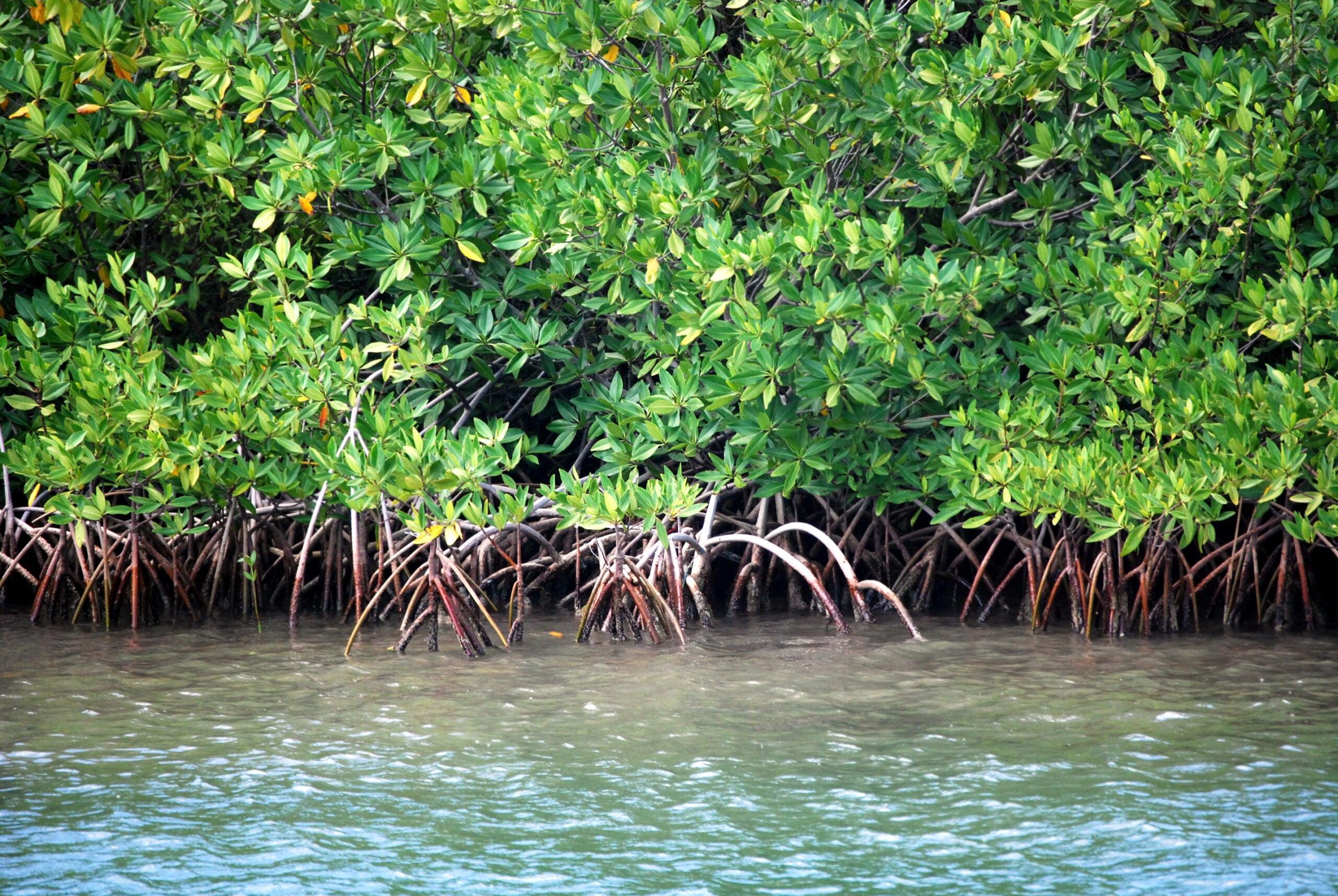
Protecting and restoring mangrove forests are cost-effective nature-based solutions to buffer coastlines from the impacts of climate change. Photo: Environmental Defense Fund
By Juan Pablo Hoffmaister, Associate Vice President, Global Climate Cooperation and Zach Cohen, Senior Analyst, Global Climate Cooperation
Climate change isn’t just about sudden disasters. Creeping issues like biodiversity loss, rising sea levels, and desertification are slowly reshaping our world, often relegated to the background in the face of more immediate climate emergencies.
These long-term challenges are known as slow onset events (SOEs). They place new pressures on communities to adapt through measures such as disaster preparedness, while also leading to losses and damages (L&D) – the impacts of climate change which occur despite mitigation and adaptation efforts.
While the international community has made important progress to address the impacts of SOEs – including launching a new Loss and Damage fund to assist vulnerable countries in preparing for and responding to SOEs – the reality is that financing for slow onset events remains severely lacking. Many countries are struggling to secure the resources needed to address these monumental environmental dilemmas.
In order to prioritize tomorrow’s issues today, we must rapidly scale up finance to tackle SOEs. The L&D fund will play a key role on this front – it recently held its first board meeting, and as it gears up to provide financing to those in need, it must do so in a way that optimizes public resources to maximize impact and leverages the solutions already provided by nature.
Why SOEs should be on our radar
While both slow onset events and rapid onset events are increasing due to climate change, the Intergovernmental Panel on Climate Change (IPCC) estimates more people will be affected by slow onset processes than extreme weather events in the long-term.
Whether it’s loss of livelihoods and income, damage to ecosystems and property, or even population displacement, the interconnected nature of SOEs means we’re all impacted. Here are some examples of SOEs and how they threaten to push Earth’s ecosystems to a breaking point:
- Biodiversity loss can cripple nature’s resilience to climate change by lowering ecosystem functions like carbon storage.
- Temperature increases lead to a rise in frequency of extreme heat waves and wildfires.
- Land and forest degradation threatens to tip the balance of many terrestrial ecosystems from carbon sinks to becoming carbon sources.
- Desertification (i.e., land degradation in arid, semi-arid or dry sub-humid regions) can severely impact agricultural and biomass productivity.
- Sea level rise is linked to frequent or intense flooding, coastal erosion, saltwater intrusion into water infrastructure, or even permanent submergence of land.
- Ocean acidification threatens the delicate functioning of ocean ecosystems, with increased pH of ocean water leading to coral bleaching, toxic algal blooms, and the dissolution of shells in marine species.
Challenges of this scale require financing, and a lot of it.
Mobilizing capital for natural solutions
One cost-effective way countries can respond to slow onset events is through nature-based solutions (NbS). These solutions harness the tools already provided by nature to address and build resilience against the impacts of climate change, including SOEs.
For example, maintaining healthy mangrove forests can protect coastlines against storm surges and erosion while supporting local fisheries. Or take sustainable land management practices like reforestation or afforestation, which can help prevent drought-prone landscapes from slowly transforming into deserts.
To better understand how policymakers and investors can support nature-based solutions that address SOEs, EDF and Pollination recently conducted a review of diverse and innovative financial mechanisms which can enable these solutions, summarized in a new factsheet from EDF. The featured examples draw from different sources of public, private and blended finance, and similar analysis could be useful across the different SOEs.
Public finance plays a crucial role in supporting NbS – in 2023, $200 billion in climate financing was dedicated toward NbS, and 82% of this came from public sources, such as grants from governments and multilateral organizations. While public finance alone will not meet global finance needs for tackling SOEs, it can also kickstart other financial mechanisms. For example, public finance can help mitigate perceived risks to private sector investment and support the implementation of policies that incentivize innovative approaches.
One such innovative approach is Payment for Ecosystem Services (PES), a financing mechanism used to tackle the SOE of biodiversity loss. PES engages both the private sector and local stakeholders in conservation and restoration efforts. To date, over 153 operational PES schemes are currently strengthening the protection of watersheds and forests across 37 countries.
Other financial mechanisms such as nature-focused funds and new insurance products are attracting the attention of private investors, incentivizing the private sector to safeguard and restore biodiversity while also adding value to their portfolios. Public finance, through instruments like the Loss and Damage fund, can enable countries to deploy and capitalize on these innovative tools.
Lessons for the Loss and Damage Fund
The Loss and Damage fund will be critical in addressing the finance gap for slow onset events. To do this well, the fund should adopt proactive financing strategies to get ahead of the worst impacts from climate change. It’s also vital that the fund works in harmony with other climate finance funds to coordinate and maximize efforts. And most importantly, the fund should incorporate approaches and lessons from innovative NbS financing mechanisms to meet its full potential.
While it may be convenient to place slow onset events on the backburner, financing climate solutions now is a more cost-effective approach in the long run. By embracing creative financial mechanisms and harnessing the power of nature-based approaches, we can pave the way for a more resilient tomorrow.
Further reading:
edf.org/ScalingFinanceforSlowOnsetEvents









